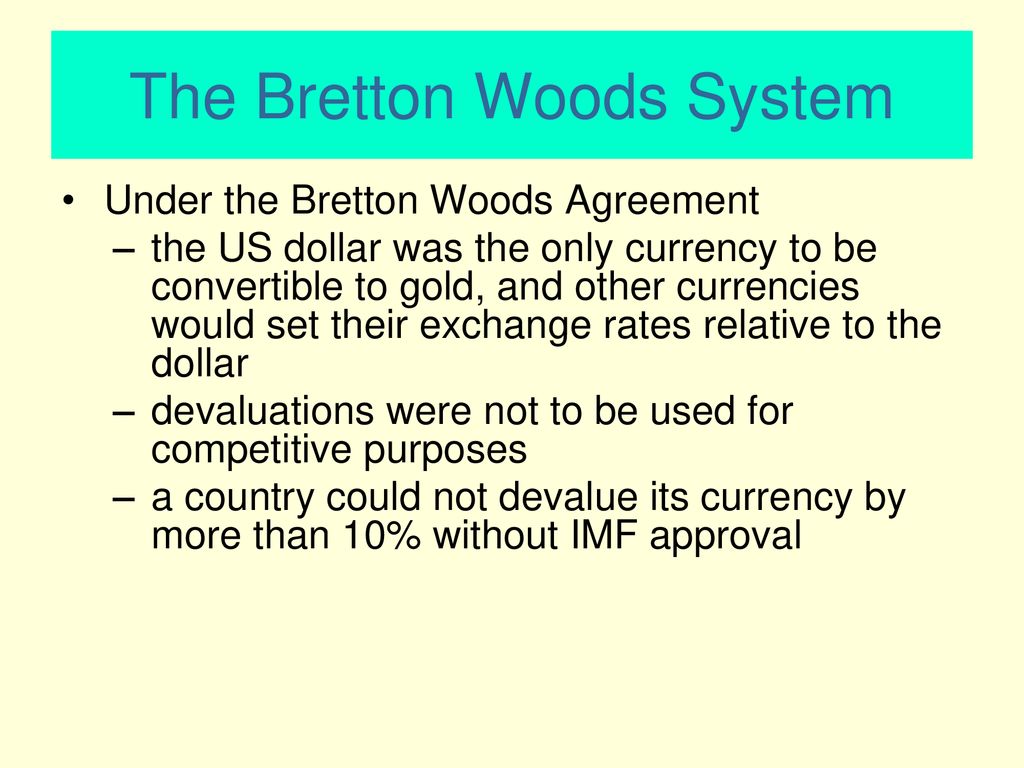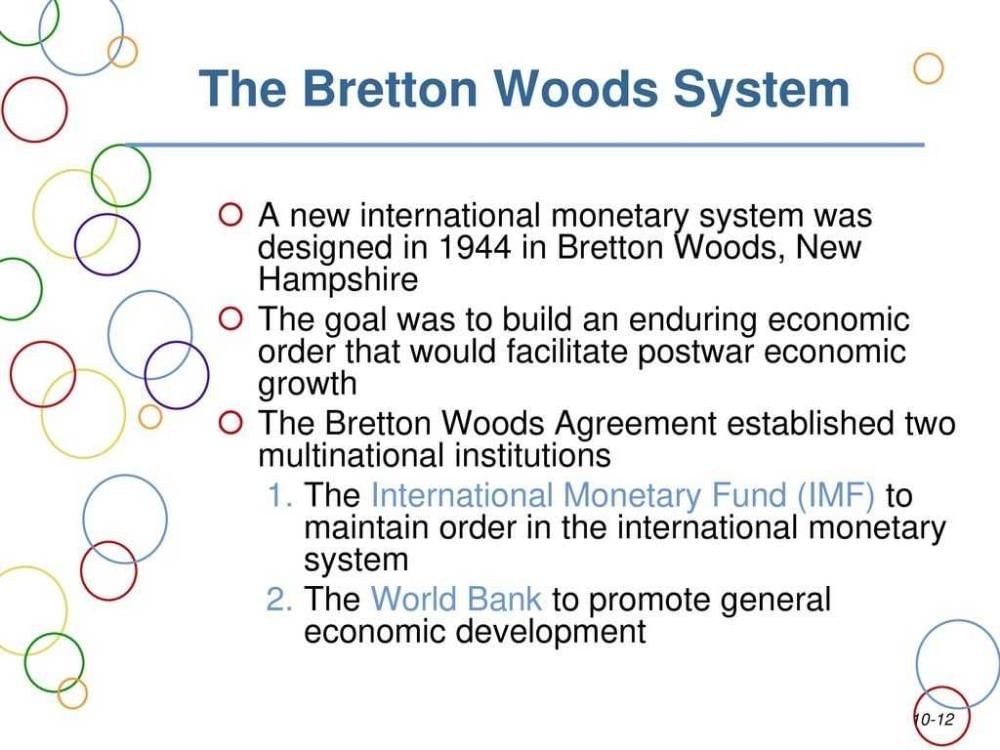
Unpacking the Bretton Woods System: Its Enduring Legacy and Modern Relevance
Imagine a world reeling from two devastating global wars and a crippling economic depression. International trade was a mess, currencies were unstable, and nations were wary of each other. It was a chaotic landscape where economic instability often fueled political tensions.
This was the backdrop against which a group of brilliant minds gathered in July 1944 at a picturesque resort in Bretton Woods, New Hampshire, USA. Their mission? To design a new global financial system that would prevent future economic crises, foster international cooperation, and promote prosperity. What emerged from this historic meeting was the Bretton Woods System, a monumental framework that shaped the global economy for decades and whose influence is still deeply felt today.
For beginners, understanding the Bretton Woods System might seem daunting, but it’s essentially the grandparent of our current global financial order. Let’s break it down.
What Exactly Was the Bretton Woods System?
At its heart, the Bretton Woods System was a set of rules and institutions designed to govern international monetary and financial relations. It aimed to create a stable global economy, encourage free trade, and help nations recover from the war.
Think of it like a set of traffic rules for money between countries:
- Who: Representatives from 44 Allied nations, primarily led by the USA and UK (John Maynard Keynes for Britain, Harry Dexter White for the USA).
- What: An agreement to create a new global economic order.
- When: July 1944, during World War II, but with an eye on the post-war future.
- Where: Bretton Woods, New Hampshire, USA.
- Why: To avoid a repeat of the economic chaos of the 1930s (competitive devaluations, protectionism) that contributed to global conflict.
The system officially lasted from the late 1940s until 1971, when it was dismantled.
The Core Pillars of the Bretton Woods System
The system was built on three main components, each playing a crucial role:
1. The Gold-Dollar Standard (Fixed Exchange Rates)
This was the absolute cornerstone of Bretton Woods:
- The U.S. Dollar as King: The U.S. dollar was pegged (fixed) to gold at a price of $35 per ounce. This meant the U.S. government guaranteed to exchange dollars for gold at this rate for other central banks.
- Other Currencies Pegged to the Dollar: All other member countries’ currencies were then pegged to the U.S. dollar at a fixed exchange rate. For example, a certain number of British Pounds would always equal a certain number of U.S. dollars.
- "Fixed but Adjustable": While the exchange rates were fixed, there was a small allowance for adjustment (up to 1% fluctuation). If a country faced a significant economic imbalance (e.g., persistent trade deficits), it could, with the agreement of the International Monetary Fund (IMF), devalue or revalue its currency. This flexibility was crucial to prevent the rigidities of the old gold standard.
Why was this important? It brought stability and predictability to international trade and investment. Businesses knew what their money would be worth, reducing risk and encouraging cross-border commerce.
2. The International Monetary Fund (IMF)
Born out of the Bretton Woods agreement, the IMF was designed to be the "policeman" and "lender of last resort" for the global monetary system:
- Purpose: To oversee the fixed exchange rates, provide short-term financial assistance to countries facing balance-of-payments problems (i.e., they were spending more foreign currency than they were earning), and promote international monetary cooperation.
- How it worked: Member countries contributed funds to a pool. If a country was running low on foreign currency (say, dollars needed to buy imports), it could borrow from the IMF to stabilize its currency and economy, often with conditions attached to encourage responsible economic policies.
- Role Today: The IMF still exists today, playing a vital role in global financial stability, though its functions have evolved to include surveillance of global economies and providing loans to countries in crisis.
3. The International Bank for Reconstruction and Development (IBRD) – The World Bank
The second major institution created at Bretton Woods, the IBRD (now commonly known as the World Bank) had a different, but equally crucial, mission:
- Purpose: Its initial goal was to provide long-term loans for the reconstruction of war-torn Europe and Japan.
- How it worked: It raised money from international financial markets and member governments to fund large-scale infrastructure projects (e.g., roads, dams, power plants).
- Role Today: The World Bank group has expanded significantly, focusing on poverty reduction and development in developing countries worldwide. It provides technical assistance and financial support for a wide range of projects, from education to health to sustainable energy.
The Golden Age of Bretton Woods: Its Successes
For over two decades, the Bretton Woods System presided over an era of unprecedented global economic growth and stability, often dubbed the "Golden Age of Capitalism."
- Economic Stability: Fixed exchange rates eliminated currency volatility, making international trade and investment far less risky.
- Trade Expansion: With stable currencies, countries could trade more freely and efficiently, leading to a boom in global commerce.
- Post-War Reconstruction: The World Bank played a critical role in rebuilding Europe and Japan, laying the groundwork for their economic resurgence.
- Global Cooperation: The IMF fostered a spirit of collaboration, helping countries work together to manage economic challenges rather than resorting to beggar-thy-neighbor policies.
- Low Inflation: The link to gold helped to keep inflation in check in many developed economies.
The Cracks Begin to Show: Why It Collapsed
Despite its successes, the Bretton Woods System eventually buckled under its own weight and changing global economic realities. Several factors contributed to its demise:
- The "Triffin Dilemma": This was a fundamental flaw. For the global economy to grow, the U.S. needed to supply more and more dollars to the rest of the world. However, if too many dollars were held outside the U.S. compared to the amount of gold backing them, confidence in the dollar’s convertibility to gold would erode. This created a dilemma: either the U.S. issued enough dollars to support global trade (undermining the dollar’s gold backing) or it conserved gold (stifling global liquidity).
- U.S. Spending and Deficits: The Vietnam War and ambitious social programs ("Great Society") in the U.S. led to increased government spending and growing trade deficits. This meant more dollars were flowing out of the U.S. than coming in, flooding the world with dollars.
- Speculation Against the Dollar: As foreign central banks accumulated more dollars than they felt were backed by U.S. gold reserves, they began to demand gold in exchange for dollars. This put immense pressure on the U.S. gold reserves.
- Inflation: The growing supply of dollars, combined with rising oil prices and other factors, led to increased inflation in the U.S. This made the $35 per ounce gold peg increasingly unrealistic.
- Germany and Japan’s Economic Rise: As these economies recovered and grew strong, their currencies (like the Deutschmark and Yen) became very strong relative to the dollar, putting further strain on the fixed exchange rate system.
The Nixon Shock (August 15, 1971): Facing a severe financial crisis and mounting pressure on the dollar, U.S. President Richard Nixon unilaterally announced that the U.S. would no longer convert dollars to gold for foreign central banks. This move effectively ended the convertibility of the dollar to gold and, with it, the Bretton Woods System of fixed exchange rates. Currencies were left to "float" against each other, determined by market forces.
The Legacy of Bretton Woods: What Remains?
Even though the fixed exchange rate system is gone, the Bretton Woods agreement left an indelible mark on the world:
- The IMF and World Bank: These two powerful international institutions are still very much alive and central to global economic governance. They have adapted their roles, but their founding principles of international cooperation remain.
- Floating Exchange Rates: The post-Bretton Woods era ushered in a system where most major currencies’ values are determined by supply and demand in foreign exchange markets. This is the system we mostly have today.
- The U.S. Dollar’s Dominance: Even without gold backing, the U.S. dollar remained (and still is) the world’s primary reserve currency and the most used currency in international trade and finance. This is a direct legacy of its central role under Bretton Woods.
- Emphasis on International Cooperation: The idea that nations should work together to manage global economic challenges, rather than acting in isolation, was a core Bretton Woods principle that continues to guide international relations.
- A Blueprint for Global Governance: Bretton Woods demonstrated that a coordinated approach to global economic issues was possible and beneficial. It set a precedent for future international agreements and organizations.
Relevance Today: Why Should We Still Care About Bretton Woods?
Understanding the Bretton Woods System isn’t just about history; it’s crucial for making sense of our current global economic landscape:
- Understanding Global Finance: The system laid the foundation for the international financial architecture we live in today. To comprehend the IMF, the World Bank, or even why the dollar is so important, you need to know their origins.
- Lessons from Stability and Crisis: Bretton Woods taught us invaluable lessons about the benefits of currency stability and the dangers of economic nationalism. It also showed the inherent difficulties in maintaining rigid systems in a dynamic world.
- The Role of International Institutions: The ongoing debates about the power and effectiveness of the IMF and World Bank are rooted in their original mandates and evolution since Bretton Woods.
- Calls for a "New Bretton Woods": In times of global economic crisis (like the 2008 financial crisis or the COVID-19 pandemic), there are often calls for a "new Bretton Woods" – a grand agreement to reform the global financial system and address modern challenges like climate change, inequality, or pandemics. This shows the enduring appeal of the idea of coordinated global action.
- Globalization’s Roots: By promoting stable trade and international investment, Bretton Woods significantly contributed to the process of globalization, linking economies and societies closer together.
Conclusion
The Bretton Woods System was a truly ambitious and transformative project. It was a bold attempt to bring order out of chaos, stability out of instability, and cooperation out of conflict. While its original fixed exchange rate mechanism eventually proved unsustainable, its institutional legacy – the IMF and the World Bank – continues to shape global finance and development.
More importantly, the spirit of Bretton Woods – the idea that international cooperation is essential for global economic prosperity and stability – remains profoundly relevant. As the world faces new challenges, from climate change to digital currencies, the lessons learned from that gathering in New Hampshire nearly 80 years ago continue to guide our efforts to build a more resilient and equitable global economy. The Bretton Woods System may be history, but its influence is very much alive in our present and future.



Post Comment